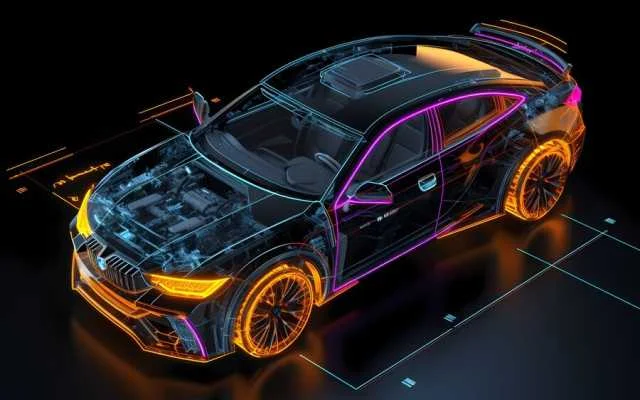Understanding Car Pillars
What Exactly is a Car Pillar?
Car pillars, often referred to simply as pillars, are vertical structural supports that are integral to the framework of a vehicle's body. These pillars provide essential reinforcement to the vehicle's roof, doors, and windows, helping to maintain structural integrity and safety in the event of a collision or rollover.
Types of Car Pillars
1. A-Pillar
The A-pillar is located at the front of the vehicle, adjacent to the windshield. It plays a crucial role in supporting the front roofline and contributes to the overall rigidity of the vehicle's front end. A-pillars also house important safety features such as airbags and are designed to withstand significant impact during frontal collisions.
2. B-Pillar
Situated between the front and rear doors, the B-pillar provides structural support to the vehicle's roof and helps to reinforce the door frames. B-pillars are typically thicker and stronger than A-pillars, as they are subjected to greater stress during side impacts and rollovers. In some vehicles, the B-pillar may also incorporate side impact protection features.
3. C-Pillar
Located at the rear of the vehicle, the C-pillar supports the rear roofline and helps to maintain stability, especially in the case of SUVs and larger vehicles. C-pillars vary in design and thickness depending on the vehicle's body style and structural requirements.
Functions of Car Pillars
1. Structural Support
One of the primary functions of car pillars is to provide structural support to the vehicle's body. By distributing weight and reinforcing key areas such as the roof and door frames, pillars help to minimize deformation and maintain the overall integrity of the vehicle's structure.
2. Crash Protection
Car pillars play a crucial role in protecting occupants during collisions and rollover events. The sturdy construction of pillars helps to absorb and distribute impact forces, reducing the risk of injury to passengers inside the vehicle. Additionally, pillars may house airbags and other safety features designed to mitigate the effects of a crash.
3. Noise Reduction
In addition to their structural role, car pillars also contribute to reducing noise and vibration within the vehicle cabin. By providing a barrier between the interior and exterior environments, pillars help to dampen road noise and improve overall comfort for occupants.
Differences Between Pillars in Sedans and SUVs
While the basic function of car pillars remains consistent across different vehicle types, there are some notable differences between pillars in sedans and SUVs.
1. Size and Thickness
Due to their larger size and higher center of gravity, SUVs typically feature thicker and more robust pillars compared to sedans. This extra reinforcement helps to enhance stability and safety, especially during off-road driving and rollover situations.
2. Design and Placement
The design and placement of pillars may vary between sedans and SUVs to accommodate differences in body style and functionality. For example, SUVs may have additional pillars or reinforcement in the rear to support larger tailgates or accommodate third-row seating.
3. Impact Resistance
Given their versatility and off-road capabilities, SUVs are often engineered with enhanced crash protection features, including reinforced pillars and advanced safety systems. Sedans, on the other hand, may prioritize aerodynamics and fuel efficiency without compromising on safety standards.
In conclusion, car pillars are indispensable components of vehicle design, providing essential support, protection, and functionality. Whether in sedans or SUVs, these structural elements play a vital role in ensuring the safety and comfort of occupants on the road. By understanding the different types and functions of car pillars, drivers can appreciate the engineering behind these critical components and make informed decisions when selecting their next vehicle.
So, next time you're behind the wheel, take a moment to appreciate the silent guardians that are your car pillars, working tirelessly to keep you safe on your journey.

